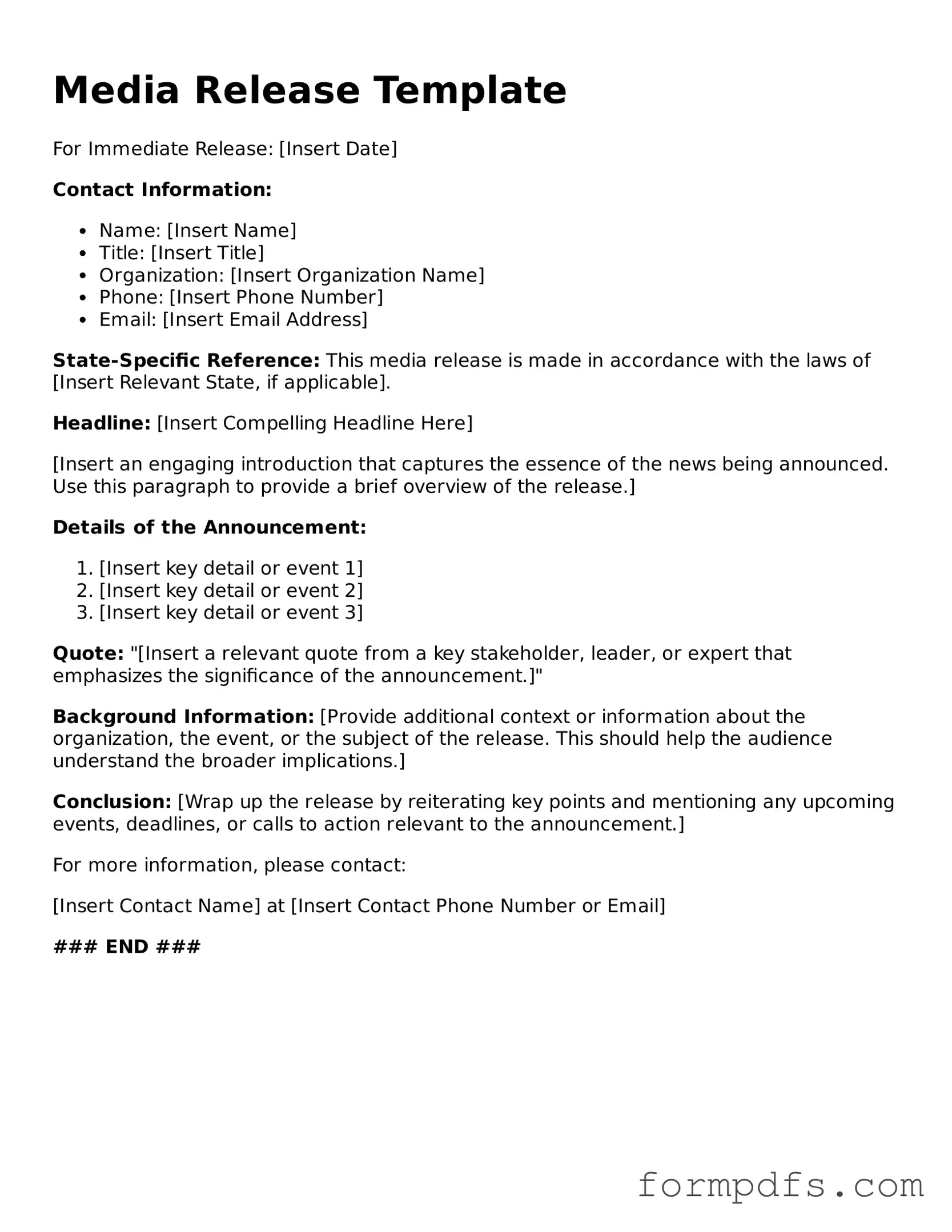What is a Media Release form?
A Media Release form is a legal document that grants permission to an individual or organization to use someone's image, voice, or other likeness in various media formats. This can include photographs, videos, or audio recordings. By signing this form, the individual allows their likeness to be used for promotional, educational, or informational purposes without any expectation of compensation.
Why is a Media Release form important?
The Media Release form serves several important functions. First, it protects the rights of both the individual and the organization using the media. It clarifies how the media will be used and ensures that the individual is aware of and consents to this use. Additionally, it can help prevent potential legal disputes over privacy and copyright issues, making it a crucial step in any media-related project.
Who needs to sign a Media Release form?
Generally, anyone whose likeness will be captured and used in media should sign a Media Release form. This includes participants in videos, photographs, or interviews. If the individual is a minor, a parent or guardian must sign on their behalf. Organizations often require this form to ensure they have the necessary permissions to use the content legally.
Can a Media Release form be revoked after signing?
Once a Media Release form is signed, it typically cannot be revoked for uses that have already occurred. However, the specifics can vary based on the terms outlined in the form itself. Some forms may include clauses that allow for revocation under certain conditions. It's essential for individuals to read the document carefully and understand their rights before signing.
Is there a standard format for a Media Release form?
While there is no universally accepted standard format for a Media Release form, most forms include specific elements. These typically consist of the individual's name, the purpose of the media use, the scope of the rights being granted, and any compensation details, if applicable. Organizations may tailor the form to fit their specific needs, but clarity and comprehensiveness are key to ensuring that all parties understand their rights and responsibilities.
